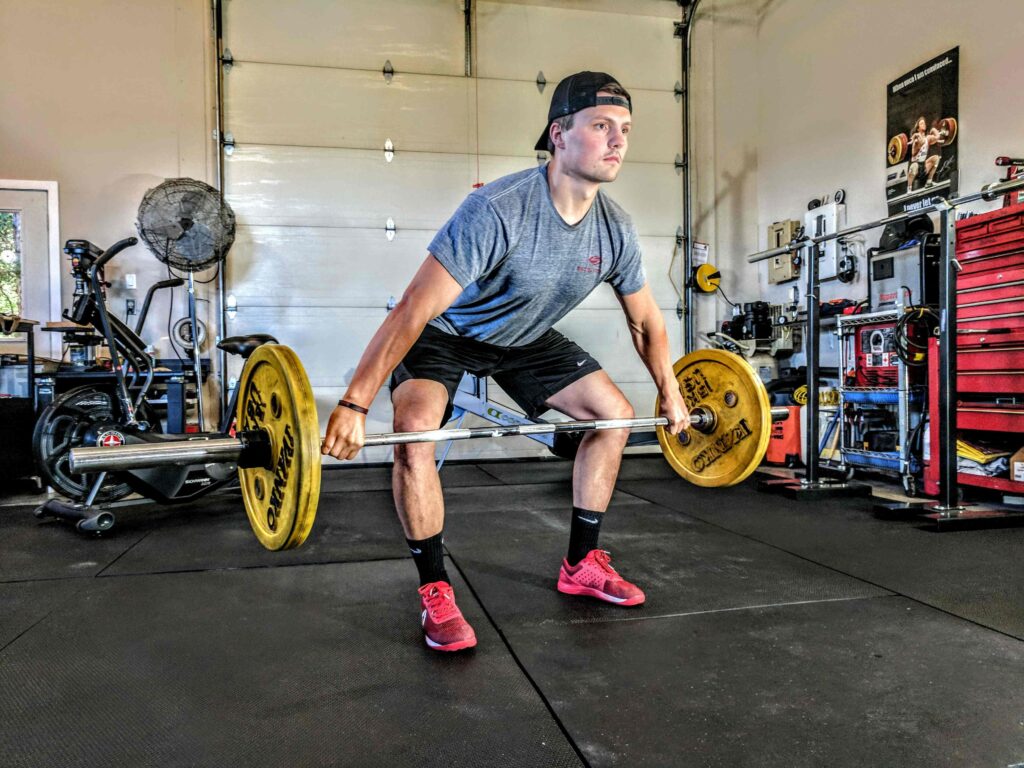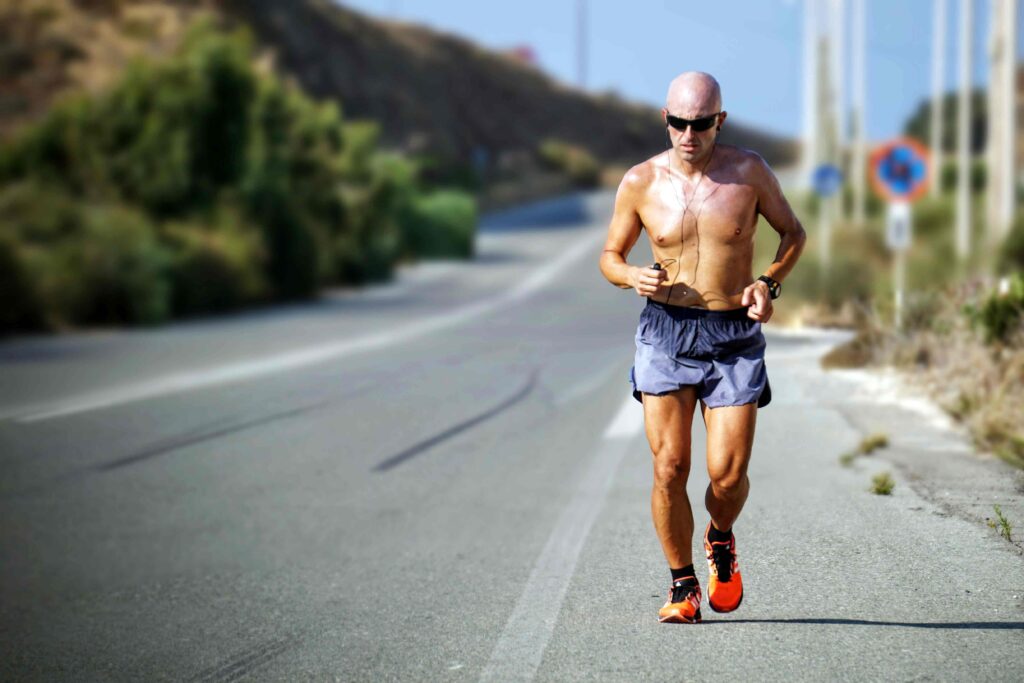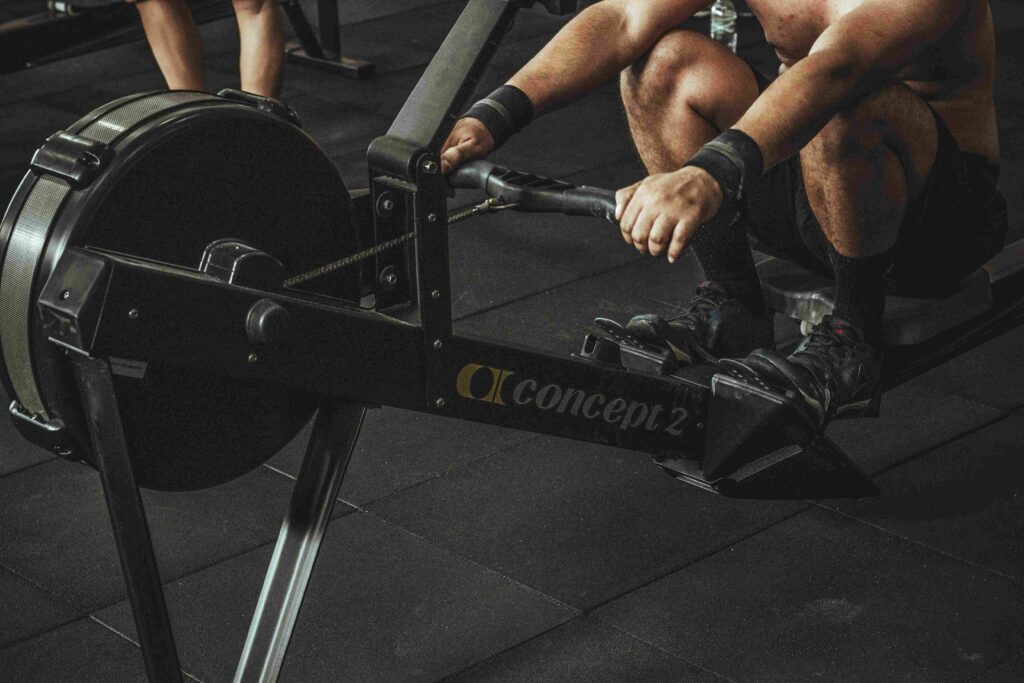FITNESS
Here you will find the fundamentals needed for setting up your first longevity training plan.
Build habits like bricks: one at a time for a strong foundation.
MOVEMENT
Movement is the foundation of human existence, deeply ingrained in our biology and evolution. For prehistoric humans, every day was a test of survival, requiring relentless physical effort—tracking prey, gathering food, climbing, and navigating vast landscapes. Our bodies evolved to thrive on this constant activity, adapting to the demands of a life in motion. Fast forward to the modern era, where convenience and technology have dramatically reduced the need for physical exertion. Yet, our biology remains the same, relying on movement to maintain health and resilience. Regular activity strengthens our hearts, bones, and muscles, improves circulation, and lowers inflammation—key pillars of longevity. By making movement a central part of our daily lives, we honor our evolutionary design and safeguard our vitality for the future.

LONGEVITY TRAINING
Longevity training focuses on building a body that remains strong, resilient, and functional as we age. It combines three key elements: strength training, to preserve muscle mass and bone density; cardio in Zone 2, a steady-state intensity that improves metabolic health and endurance; and VO2 max training, which pushes your cardiovascular system to its peak capacity, enhancing oxygen utilization and overall fitness. Together, these pillars support long-term health, mobility, and vitality, creating a foundation for a longer, healthier life.
FIRST PILAR – POWER
WHAT IS STRENGTH TRAINING
Strength training is a form of exercise designed to increase muscular strength, improve movement efficiency, and enhance overall physical performance. It focuses on building balanced strength across muscle groups, correcting imbalances, and promoting proper movement patterns. By incorporating resistance exercises, strength training not only boosts functional fitness but also supports long-term mobility, stability, and resilience.
WHY SHOULD YOU DO IT
Resistance training is essential for health and longevity, supporting strength, physical independence, and metabolic health. It combats age-related muscle and bone loss, reducing the risk of falls, injuries, and chronic conditions like type 2 diabetes. Think of your muscles as armor against aging. Aim for at least three weekly sessions with compound movements (squats, deadlifts, presses), progressive overload, and balance it with recovery, mobility, and proper nutrition.”
TESTOSTERONE
Resistance training has a significant impact on testosterone levels in men, supporting overall health and vitality. Studies show that regular resistance exercises, especially those targeting large muscle groups like squats, can temporarily elevate testosterone levels post-workout. These short-term boosts aid in muscle growth, strength development, and recovery.
Testosterone, often called the 'hormone of youth,’ is vital for far more than muscle development. It boosts confidence, mental well-being, fertility, erectile function, and the ability to make calm, calculated decisions under pressure. Research suggests that men with higher testosterone levels often experience greater career and life success, highlighting its wide-reaching impact on well-being.

YOU ARE TRAINING FOR THE LAST DECADE OF YOUR LIFE
You are training for the last decade of your life. Imagine the things you want to do as you age—lifting your grandkids, walking up stairs with ease, traveling without limitations. To make those visions a reality, you need to plan your life and training now. Every workout, every healthy habit, and every decision you make today builds the strength, mobility, and resilience you’ll rely on in your later years. Train with the future in mind, so you can live fully when it matters most.
01 HOW TO MEASURE STRENGHT
Measuring strength is essential for tracking progress and maintaining longevity. A practical benchmark is being able to lift or press your body weight in key movements. For example, a healthy goal for longevity is to deadlift or squat at least your body weight and bench press 70-100% of it. These metrics indicate functional strength, which is critical for everyday activities like standing up, carrying objects, or preventing falls. Maintaining this level of strength helps preserve independence, supports bone and joint health, and ensures resilience as you age.
02 WHY YOU NEED TO PROGRESS
Progressive overload is the gradual increase of stress placed on your body during exercise to stimulate growth and improvement. It’s the foundation of effective training, ensuring that your muscles, bones, and cardiovascular system adapt over time. This can be achieved by lifting heavier weights, increasing repetitions, enhancing intensity, or reducing rest periods. Without progressive overload, your body plateaus, as it no longer has a reason to adapt. It’s essential for building strength, endurance, and resilience, making it a cornerstone of any fitness routine focused on longevity and performance.
03 GRIP STRENGTH
Grip strength is a powerful indicator of overall health, longevity, and functional fitness. It reflects the strength of your hands and forearms, which are crucial for daily tasks like carrying, lifting, and opening objects. More importantly, research links grip strength to cardiovascular health, mobility, and even survival rates in older adults. Stronger grip correlates with greater total body strength and resilience, serving as a predictor of independence as you age. Incorporating exercises like deadlifts, farmer’s carries, and pull-ups into your routine can help develop grip strength and support long-term health.
04 THOW TO TRACK YOUR PROGRESS
Tracking your progress is key to staying motivated and achieving your fitness goals. Start by setting clear and measurable objectives, such as improving strength, endurance, or mobility. Keep a detailed training log, recording exercises, weights, sets, and reps to monitor your improvements over time. Periodically test your strength with key lifts like squats or deadlifts, and use wearables or apps to track metrics like heart rate and sleep quality. Pay attention to how daily activities feel—lifting groceries or climbing stairs can reveal real-world progress. Reassess your progress every few weeks to adjust your plan and keep moving forward.
05 SHOULD YOU TRAIN TO FAILURE
Training to failure means performing an exercise until you physically cannot complete another repetition with proper form due to muscle fatigue. While this approach can maximize muscle growth and strength by fully taxing the muscles, it’s not always necessary—or ideal—for every set. Training close to failure (stopping 1-2 reps before failure) is often just as effective for progress, while reducing the risk of overtraining, injury, and burnout. Strategically incorporating occasional sets to failure can help push through plateaus, but most of your training should focus on working near failure with good form and adequate recovery.
06 FREE WEIGHTS VS MACHINES
When it comes to building muscle mass, research shows that machines and free weights are equally effective, as long as you train with proper intensity and progressive overload. However, real life isn’t a controlled laboratory—it’s more like the wild outdoors. To build true, functional strength that translates to everyday challenges, free weights are essential. They require balance, coordination, and stabilization, replicating the demands of real-world movements. Machines, while complementary, play an important role too. They provide safety, especially for beginners or during rehabilitation, and allow you to isolate specific muscle groups. The best approach combines both, with free weights as the foundation and machines as valuable tools to fill in the gaps.
07 MINERAL DENSITY
Bone mineral density (BMD) refers to the strength and density of your bones, which is critical for overall health and physical independence. For women, maintaining high BMD is especially important due to the natural decline in bone density that occurs with age, particularly after menopause, when estrogen levels drop. Low BMD increases the risk of osteoporosis, fractures, and mobility issues, which can significantly impact quality of life.
Weight-bearing exercises, strength training, and a diet rich in calcium and vitamin D are key to preserving BMD. Activities like squats, deadlifts, and walking help stimulate bone growth by putting stress on the skeletal system, encouraging it to become stronger. For women, focusing on bone health early is essential to reducing the risk of fractures and ensuring resilience as they age.
08 OVERTRAINING
Overtraining occurs when you push your body beyond its ability to recover, leading to fatigue, decreased performance, and even injury. Contrary to the „more is better” mindset, research shows that you don’t need endless hours in the gym to make progress—even elite athletes can thrive on as little as three strength-training sessions per week.
Consistency and quality matter far more than quantity. With a well-designed program that emphasizes progressive overload, proper form, and recovery, three weekly sessions can be highly effective for building strength, muscle mass, and resilience. This approach not only minimizes the risk of overtraining but also leaves room for recovery, mobility work, and other activities that support long-term progress.
09 WHEN SHOULD YOU TRAIN
The best time to train is in the morning, as it can boost energy, focus, and productivity for the rest of the day while ensuring your workout is done before unexpected distractions arise. However, if mornings don’t fit your schedule, the key is to adapt and train whenever it’s most practical for you. Consistency matters more than timing, so choose a time that aligns with your lifestyle and allows you to stay committed to your fitness goals.
TRAINING QUESTIONS
01 DO I NEED LIFT WEIGHTS AS A WOMAN
Yes, women need to lift weights too. Strength training is crucial for building muscle and maintaining bone mineral density, which naturally declines with age, especially after menopause. This loss increases the risk of fractures, particularly hip fractures, which can often be life-threatening for older adults. Lifting weights helps women stay strong, independent, and resilient, reducing the likelihood of injuries and improving overall longevity. Start now to protect your future health.
02 WHAT IF I GET TOO BIG
For most natural lifters without exceptional genetics, gaining excessive muscle mass isn’t something to worry about. Building muscle is a slow process that requires consistent training, proper nutrition, and often a caloric surplus. If you’re following a structured plan with balanced nutrition and caloric control, the likelihood of „getting too bulky” is extremely low. Instead, you’ll build strength, functionality, and a lean, healthy physique.
03 I DON’T WANT TO LOOK MUSCULAR AS A WOMAN
Women won’t become overly muscular from strength training because building significant muscle mass is extremely difficult due to lower testosterone levels and hormonal differences compared to men. For women, gaining muscle is a slow process that requires intense training, proper recovery, and often a caloric surplus.
It’s also worth noting that many fit, toned trainers on YouTube showing bodyweight or mat workouts actually built their physiques in the gym through consistent strength training. Their lean, firm appearance is the result of lifting weights, not just low-intensity exercises. Strength training is key to achieving a sculpted and strong body while maintaining a feminine physique.
SECOND PILAR – CARDIO ZONE 2
LOW INTENSITY TRAINING
Zone 2 cardio, a form of low-intensity steady-state exercise, is crucial for longevity and cardiovascular health. This training occurs at about 60-70% of your maximum heart rate, where you can sustain activity while still being able to hold a conversation. Zone 2 improves mitochondrial efficiency, enhances fat metabolism, and supports heart function, making it essential for reducing the risk of cardiovascular diseases. Incorporating 2-3 sessions per week of Zone 2 cardio, such as brisk walking, cycling, or jogging, builds a strong aerobic base and contributes to long-term vitality.

YOU ARE TRAINING FOR THE LAST DECADE OF YOUR LIFE
Regular Zone 2 cardio is essential for long-term health and longevity. Performed at 60–70% of your maximum heart rate, it improves your body’s ability to use oxygen efficiently, enhances mitochondrial function, and supports fat metabolism. These adaptations reduce the risk of chronic diseases like diabetes and heart disease while boosting cardiovascular endurance. Zone 2 cardio also builds a strong aerobic foundation, improving your overall fitness and recovery capacity. Consistent practice, even for 30–60 minutes a few times a week, is a simple yet powerful way to maintain health and vitality.
01 What are the benefits of Zone 2 cardio for longevity?
Zone 2 cardio, performed at 60–70% of maximum heart rate, is particularly effective for longevity. It enhances mitochondrial efficiency, improves fat metabolism, and reduces the risk of chronic diseases such as heart disease and diabetes. This moderate-intensity, steady-state cardio also supports cardiovascular health and is accessible for most individuals, making it a cornerstone of long-term fitness.
02 HOW OFTEN SHOULD I DO IT
Zone 2 cardio should ideally be done 2–3 times per week for 30–60 minutes per session to achieve significant cardiovascular and metabolic benefits. For most people, this amount is sufficient to improve mitochondrial efficiency, fat metabolism, and overall aerobic fitness.
However, more isn’t always better. While increasing the frequency or duration of Zone 2 cardio can provide additional benefits, overdoing it without proper recovery may lead to fatigue, burnout, or even overtraining. The key is balance—pair Zone 2 cardio with strength training and occasional higher-intensity workouts for optimal health and longevity.
03 WHAT ACTIVITES ARE THE BEST
There’s no single „perfect” cardio exercise—what matters most is consistency and enjoyment. Indoor options like stationary bikes, treadmills, or ellipticals are excellent because they make it easy to maintain a steady pace and heart rate, especially for Zone 2 training. However, outdoor activities like walking, running, or cycling offer additional benefits for mental health, such as exposure to fresh air and nature. Ultimately, the best cardio is something you enjoy and can stick with long-term, whether it’s indoors or out. Choose what works for your body and mind.
04 WEIGHT CARDIO
Walking with a weighted vest is an excellent way to elevate your cardio routine while building strength and endurance. This simple yet effective exercise adds resistance, increasing the intensity of a low-impact activity like walking. It enhances cardiovascular fitness, improves bone density, and strengthens the core and lower body muscles.
For longevity, walking with a weighted vest mimics functional movement, preparing your body for real-world challenges. Start with a vest that’s 5–10% of your body weight and gradually increase as you adapt. It’s a versatile, joint-friendly option for boosting calorie burn and making your walks more effective without overloading your body.
THIRD PILAR – VO2 MAX
ENDURANCE
VO₂ max training focuses on improving your body’s maximum oxygen uptake during intense exercise, a key marker of cardiovascular fitness and longevity. VO₂ max reflects how efficiently your heart, lungs, and muscles work together to deliver and utilize oxygen. Higher VO₂ max levels are linked to reduced risks of chronic diseases, better metabolic health, and increased resilience to physical stress.
For longevity, VO₂ max training strengthens the heart, enhances endurance, and supports overall vitality. It typically involves high-intensity efforts, such as intervals, where you push close to your maximum capacity, followed by periods of rest. Incorporating VO₂ max workouts once or twice a week complements Zone 2 cardio and strength training, creating a well-rounded approach to long-term health and fitness.

HOW TO DO IT
VO₂ max training can be effectively done once a week, focusing on longer aerobic intervals that push your cardiovascular system near its maximum capacity. Rowing on an ergometer is a fantastic option because it engages the whole body and allows for sustained, controlled effort.
For a VO₂ max session, row for intervals of 4–6 minutes at 85–90% of your maximum effort, followed by 3–4 minutes of light recovery rowing. Repeat this for 3–5 cycles. This method improves your heart’s efficiency, oxygen utilization, and endurance. A single session per week, combined with other forms of cardio and strength training, is enough to significantly enhance your aerobic capacity and support longevity.
HOW TO MEASURE VO2
VO₂ max measures your body’s ability to utilize oxygen during exercise and can be assessed in several ways. The most accurate method is a graded exercise test in a lab, where oxygen intake is measured while exercising at increasing intensity. For more practical approaches, field tests like the Cooper Test (running as far as possible in 12 minutes) or a 1.5-mile run test can estimate VO₂ max based on your performance. Additionally, modern fitness devices and wearables use algorithms based on heart rate and activity to provide convenient, though less precise, estimates. These methods help track your cardiovascular fitness and progress.
WHY IT MATTERS
Aging and inactivity increase chronic inflammation, leading to muscle loss and frailty. Inflammatory cytokines like TNF-α and IL-6 inhibit muscle protein synthesis (MPS) and promote insulin resistance, reducing muscle mass, strength, and mobility. Exercise combats this by lowering inflammation and enhancing anabolism. Studies show that 12 weeks of combined aerobic and resistance training can decrease IL-6 and TNF-α while improving muscle function and VO₂ max. Older women may need higher exercise intensity than men to achieve similar anabolic effects due to differences in MPS responses. Regular exercise is key to maintaining muscle and reducing frailty.
LONGEVITY STARTS WITH KNWOLEDGE
Welcome to health coast – a platform dedicated to providing free, evidence-based resources on health, aging, and wellness. We believe that longevity should be accessible to everyone, grounded in science, and free of hype. Join us and take control of your health journey!
